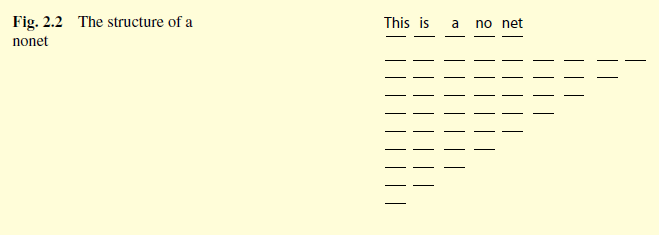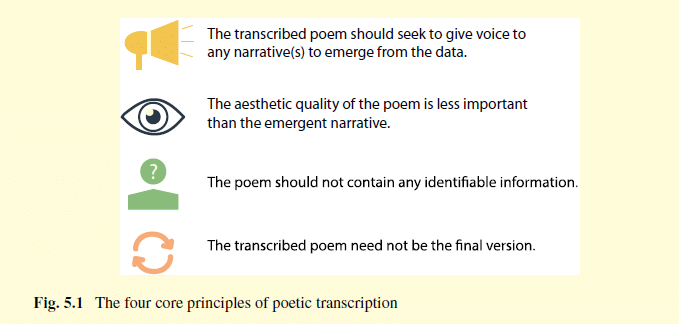by debora Ewing
“Poetry has the capacity to hold a mirror to science, capturing its reflection warts and all.”
Sam Illingworth
Dr. Sam Illingworth’s intent is to foster communication both to and with non-scientific audiences by making science and poetry feel familiar. The end result – Science Communication Through Poetry – is brilliance.
Sam is an educator, researcher, poet and a scientist, in no particular order (I think.) He comes with a laundry list of qualifications: Associate Professor in Academic Practice at Edinburgh Napier University; internationally-recognised expertise in interdisciplinary studies; he earned a scholarship from the Daiwa Anglo-Japanese Foundation regarding the relationship between science and theatre in Japan; he is the founder of Consilience Science-based Poetry Journal and its sister site, ConciliARTe; he’s written several books and a blog, https://www.samillingworth.com/.
Sam uses Oxford commas. I love that about him.
“…who exactly is Sam Illingworth to be telling me how to use poetry to help communicate science?“
Like an educator, Sam outlines How to Use This Book – he intends it to be functional from the outset, not merely a monologue. I’m telling you as a reader that it’s a delineated guide for teaching poetry as science communication, either to a class or to yourself. You will learn about yourself while reading this book. That’s intentional.
He wants the book to be a roadmap.
“…is the best way to diversify science and stop it from ostracizing, excluding, and alienating to use a medium which is perceived by many to be similarly ostracizing, excluding, and alienating?”
People often encounter a specific type of poetry while in school, which they did not enjoy, either school or poetry. They were turned off from poetry before discovering its diversity. It’s the same with science. Limited exposure leads to exclusion.
Sam gives us new tools in the form of terminology to help build that bridge from science to poetry:
Inward-facing (academic papers, conferences) and outward-facing (policy documents, science festivals, collaborative workshops) dialogue between scientists and non-scientists.
Interrogate to define the relationship of poetry upon science.
He coins the acronym RAW Poetry: Read, Analyze, and Write science poetry.
“Individually, science and poetry both present a set of complementary methods that together can help us to better comprehend the world and our place in it, while also diversifying knowledge and understanding.”
One of the most important tools Sam gives us is this: Actively target the incubation period, the part of problem-solving during which your task marinates in the subconscious.
It’s common practice to step away from a difficult problem, to allow your subconscious to work while you focus elsewhere. Illingworth suggests, rather than passively letting a problem rest, writing a poem about it. Examine it from a different perspective but don’t let it rest. Let it speak to you with other words.
My poetry mentor Peter Kidd gave me haiku as a remedy against insomnia. “When you find yourself awake,” he told me, “Write a haiku and lie back down.” I did, sometimes as many as three times a night. I didn’t try to force a topic on the insomnia haikus, but sometimes one would manifest. Eventually the exercise became Pavlovian, in that my brain would know it could now rest and wait for the next time to wake up and craft a poem. I was able to sleep.
Sam begins with a very functional process: simply read the poem, in your head and then aloud, and find out how it feels. Don’t worry about what it means. What are the differences in the poem internally and externally?
“When you read a poem, you do so while simultaneously bringing all of your own lived experiences, knowledge, and identity to your interpretation, or analysis, of the poem.”
This book interrogates the reader, or implores the reader to interrogate herself. The order of his questions is interesting:
1. What do you think this poem is about?
2. How does the poem make you feel?
3. Do you like the poem?
“Is there something that you are bringing to the poem…” And then he gives context, and asks whether the context changes our impressions.
Questioning ourselves is the best way to start a dialogue with others.
It’s not until Chapter 3 that Sam helps us define a poem – an educational technique like teaching vowel sounds before the written alphabet of a non-native language. I think it helps disassemble preconceptions that might get in the way of our understanding something completely new.
Chapter 3 also spends time on techniques to identify your audience where you are in your process. I think we all need this tool. The author points out, wisely, that your audience is unlikely to remain consistent. Take that any way you like, but see the truth of it.
Sam uses terms like poetic experiments; I like this one. He chooses to introduce the formal poetic form ‘nonet’ which may have origins in music, thus crossing another boundary. This book is all about crossing boundaries – no, integrating disciplines. I was immediately inspired to try writing a nonet.

Each chapter suggests further reading to help enhance your understanding of what you’ve just done.
“…it is important to make the following distinction between a research method and a research methodology: a method is the research tool (e.g. interview, questionnaire, observation) that is used by a researcher, and a methodology is the justification for using this method.”
Hey, people who like finite parameters: you’re gonna LOVE chapter 4.
The author applies conventional, directed, and summative approaches to analyzing patterns of meaning in data – in this case, the data is poetry.
“Poetry offers a way for multiple audiences to engage with scientific topics, and to establish their own common language in the process…”
Poetry can absolutely be analyzed as a data set to answer a research question using very specific methods, even accounting for words used in unique ways that might not be appropriate for the study. Sam recommends keeping a record of any poems removed or “cleaned” from the data set, and your rationale behind your decision. He explains why you need to be able to verify your findings, as science does.
Then he asks you to use what you’ve learned so far to examine your data: Read some poetry. Code some poetry. Check the auditing trail you’ve created through the process.

If we weren’t having enough utterly geeked-out fun yet, Chapter 5 addresses Poetic Transcription, or “found poetry” in scientific data. Again, Sam gives you clear steps to do this for yourself.
Don’t be Led by Aesthetics: The second core principle reminds us of the transcribed poem’s purpose: The poem should help clarify science’s story, rather than show off poetic skills.
In fact, the elements of this chapter may be surprising to the author, poet, or writer who’s not used to being a scientist. They make sense to those of us who believe art exists “out there” and it’s our job to convey it to others through language, aural or visual – through us.
This is where Sam says: Allow the poem to develop. We already do, right? It’s the hardest part of creating.
“Writing and sharing poetry can lead to an outpouring of (often unexpected) emotions, and so you need to make sure that you have a set of contingencies to deal with this.”
Chapter 6 focuses on poetry workshops, but this data could be easily extrapolated to any sort of workshop. Sam Illingworth reinforces the importance of ethical actions. He identifies the risks of emotional distress and safeguarding information, based on his experience of running science-based poetry workshops.
The author gives very detailed points on creating and running a workshop from not only the cerebral and ethical perspectives, but the physical: talking to venue owners about logistics; finding representatives from the community to ensure inclusiveness; attending to dietary requirements. Compensation. He again asks you to self-reflect: What is your role?
“Academia has a nasty habit of sorting people into well-constrained silos, which is in part to blame for the lack of diversity that we often encounter in science and scientific research more broadly.”
Sam identifies four personality types who may be interested in his book, and how they might best approach it: Scientist, Science communication practitioner, Science communication researcher, poet.
I am a poet. I’m immediately drawn to the two chapters he suggests I skip: 4 and 5.
Throughout the book there’s a recurrent impression on the future, on evolution, on legacy. I love this acknowledgement of both science and poetry as processes; it’s a theme throughout my own work and studies.
Science Communication Through Poetry reinforces the necessity of humility and feedback as a good means to that end. Not all feedback is positive; not all is applied, but even what isn’t applicable is still useful.
I recommend this book to anyone: scientists who want to become poets, teachers who want to impress curiosity upon their students, songwriters, poets and scientists alike who want to become better at what they do.
Poetry is for you. Poetry lives and breathes through all our lives. Like sparkling insect wings, like sunflowers on the side of a desert highway, it just takes a little attunement to recognize it wherever you are.
“Poetry, like science, should be for everyone”
– Sam illingworth
Further Reading:
The Poetry of Science – Sam Illingworth’s blog. Make yourself a cuppa and get lost in here on a rainy afternoon.
Books by Sam Illingworth: There are several. This is a link to the list on Goodreads.
Why Poetry? by Matthew Zapruder. My book club, a bunch of coders, engineers, flight instructors, musicians, artists, two jugglers and a magician, felt moved to write poetry while reading Why Poetry? I can’t wait for them to read Sam’s book.
ConciliARTe – Please enjoy our science-based art, and by all means please consider submitting some of your own. If you’re unsure how your work connects to science, ask us! We want to encourage the connection.
Submit to Consilience Science-Based Poetry Journal – Please. We’d love to meet you. The list of current themes is available here.
Further listening:
Why Poetry? Matthew Zapruder, via TinHouse: https://tinhouse.com/podcast/matthew-zapruder-why-poetry/
The Poetry of Science Podcast: https://www.samillingworth.com/podcast
Experimental Words: get it here on Spotify.











